Nationality American Role Psychologist Name Abraham Maslow | ||
Born April 1, 1908 Brooklyn, New York ( 1908-04 ) Institutions Cornell UniversityBrooklyn CollegeBrandeis University Influenced Books Motivation and Personality, Toward a psychology of being, Maslow on Management, The Farther Reaches of Human N, Religions - Values - and Peak Similar People Died June 8, 1970 (aged 62) Menlo Park, California, U.S. | ||
Toward a psychology of being by abraham maslow
Abraham Harold Maslow (; April 1, 1908 – June 8, 1970) was an American psychologist who was best known for creating Maslow's hierarchy of needs, a theory of psychological health predicated on fulfilling innate human needs in priority, culminating in self-actualization. Maslow was a psychology professor at Alliant International University, Brandeis University, Brooklyn College, New School for Social Research, and Columbia University. He stressed the importance of focusing on the positive qualities in people, as opposed to treating them as a "bag of symptoms." A Review of General Psychology survey, published in 2002, ranked Maslow as the tenth most cited psychologist of the 20th century.
Contents
- Toward a psychology of being by abraham maslow
- Abraham maslow s hierarchy of needs humanistic psychology and self actualization motivation
- Youth
- College and university
- Academic career
- Death
- Legacy
- Humanistic theories of self actualization
- Qualities of self actualizing people
- Dynamics of self actualization
- Methodology
- Hierarchy of needs
- Peak experiences
- Metamotivation
- B values
- Humanistic psychology
- Transpersonal psychology
- Positive psychology
- Psychology of science
- Maslows hammer
- Criticism
- Writings
- References

Abraham maslow s hierarchy of needs humanistic psychology and self actualization motivation
Youth
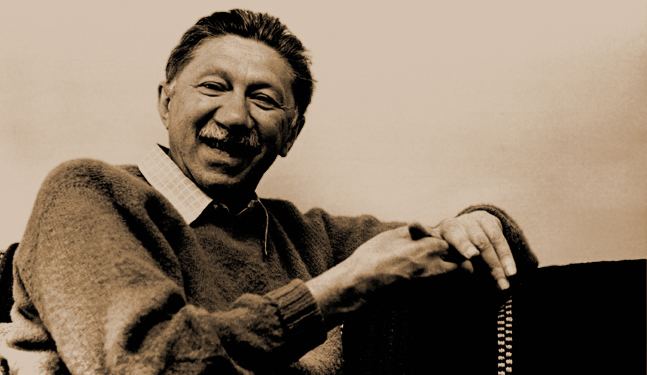
Born in 1908 and raised in Brooklyn, New York, Maslow was the oldest of seven children and was classed as "mentally unstable" by a psychologist. His parents were first generation Jewish immigrants from Russia from Kiev who fled from Czarist persecution in the early 20th century. They had decided to live in New York City and in a multiethnic, working-class neighborhood. His parents were poor and not intellectually focused, but they valued education. It was a tough time for Maslow, as he experienced anti-Semitism from his teachers and from other children around the neighborhood. He had various encounters with anti-Semitic gangs who would chase and throw rocks at him. Maslow and other young people at the time with his background were struggling to overcome such acts of racism and ethnic prejudice in the attempt to establish an idealistic world based on widespread education and monetary justice. The tension outside his home was also felt within it, he rarely got along with his mother, and eventually developed a strong revulsion to her. He is quoted as saying, "What I had reacted to was not only her physical appearance, but also her values and world view, her stinginess, her total selfishness, her lack of love for anyone else in the world – even her own husband and children – her narcissism, her Negro prejudice, her exploitation of everyone, her assumption that anyone was wrong who disagreed with her, her lack of friends, her sloppiness and dirtiness..." He also grew up with few friends other than his cousin Will, and as a result "...[He] grew up in libraries and among books." It was here that he developed his love for reading and learning. He went to Boys High School, one of the top high schools in Brooklyn. Here, he served as the officer to many academic clubs, and became editor of the Latin Magazine. He also edited Principia, the school's Physics paper, for a year. He developed other strengths as well:

As a young boy, Maslow believed physical strength to be the single most defining characteristic of a true male; hence, he exercised often and took up weight lifting in hopes of being transformed into a more muscular, tough-looking guy, however, he was unable to achieve this due to his humble-looking and chaste figure as well as his studiousness.
College and university

Maslow attended the City College of New York after high school. In 1926 he began taking legal studies classes at night in addition to his undergraduate course load. He hated it and almost immediately dropped out. In 1927 he transferred to Cornell, but he left after just one semester due to poor grades and high costs. He later graduated from City College and went to graduate school at the University of Wisconsin to study psychology. In 1928, he married his first cousin Bertha, who was still in high school at the time. The pair had met in Brooklyn years earlier. Maslow's psychology training at UW was decidedly experimental-behaviorist. At Wisconsin he pursued a line of research which included investigating primate dominance behavior and sexuality. Maslow's early experience with behaviorism would leave him with a strong positivist mindset. Upon the recommendation of Professor Hulsey Cason, Maslow wrote his master's thesis on "learning, retention, and reproduction of verbal material". Maslow regarded the research as embarrassingly trivial, but he completed his thesis the summer of 1931 and was awarded his master's degree in psychology. He was so ashamed of the thesis that he removed it from the psychology library and tore out its catalog listing. However, Professor Carson admired the research enough to urge Maslow to submit it for publication. Maslow's thesis was published as two articles in 1934.
Academic career
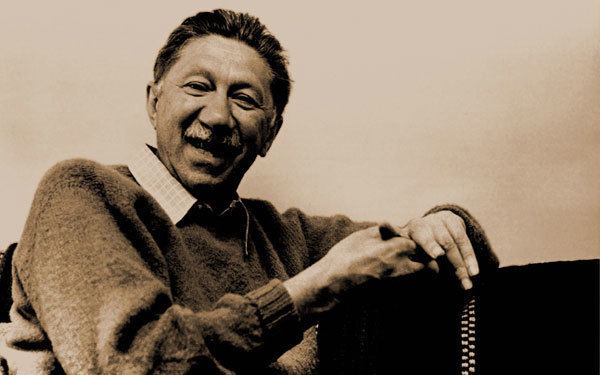
He continued his research at Columbia University, on similar themes. There he found another mentor in Alfred Adler, one of Sigmund Freud's early colleagues. From 1937 to 1951, Maslow was on the faculty of Brooklyn College. His family life and his experiences influenced his psychological ideas. After World War II, Maslow began to question the way psychologists had come to their conclusions, and though he did not completely disagree, he had his own ideas on how to understand the human mind. He called his new discipline humanistic psychology. Maslow was already a 33-year-old father and had two children when the United States entered World War II in 1941. He was thus ineligible for the military. However, the horrors of war instead inspired a vision of peace in him and this led to his groundbreaking psychological studies of self-actualizing people. These studies began with his two mentors, anthropologist Ruth Benedict and Gestalt psychologist Max Wertheimer, whom he admired both professionally and personally. These two were so accomplished in both realms, and such "wonderful human beings" as well, that Maslow began taking notes about them and their behavior. This would be the basis of his lifelong research and thinking about mental health and human potential. He wrote extensively on the subject, borrowing ideas from other psychologists but adding significantly to them, especially the concepts of a hierarchy of needs, metaneeds, metamotivation, self-actualizing persons, and peak experiences. Maslow was a professor at Brandeis University from 1951 to 1969, and then became a resident fellow of the Laughlin Institute in California. In 1967, Maslow had an almost fatal heart attack, and knew his time was limited. Maslow considered himself to be a psychological pioneer. He gave future psychologists a push by bringing to light different paths to ponder. He built the framework that later allowed other psychologists to add in more information. Maslow long believed that leadership should be non-intervening. Consistent with this approach, he rejected a nomination in 1963 to be president of the Association for Humanistic psychology because he felt that the organization should develop an intellectual movement without a leader.
Death
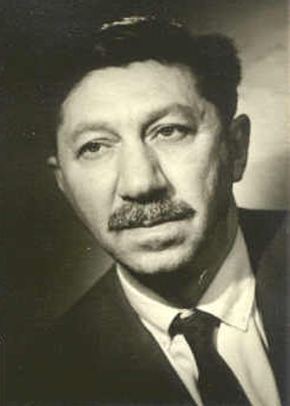
While jogging, Maslow suffered a severe heart attack and died on June 8, 1970, at the age of 62 in Menlo Park, California.
Legacy
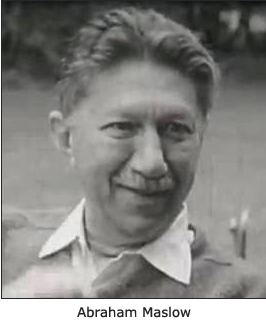
Later in life, Maslow was concerned with questions such as, "Why don't more people self-actualize if their basic needs are met? How can we humanistically understand the problem of evil?"

In the spring of 1961, Maslow and Tony Sutich founded the Journal of Humanistic Psychology, with Miles Vich as editor until 1971. The journal printed its first issue in early 1961 and continues to publish academic papers.
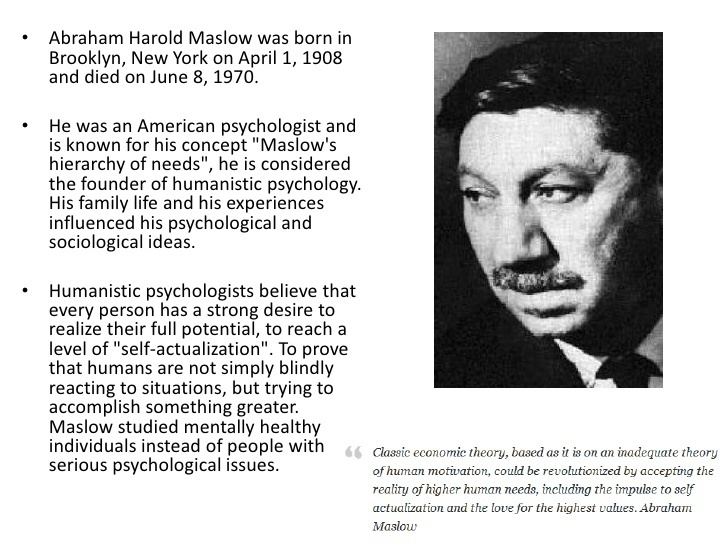
Maslow attended the Association for Humanistic Psychology's founding meeting in 1963 where he declined nomination as its president, arguing that the new organization should develop an intellectual movement without a leader which resulted in useful strategy during the field's early years.
In 1967, Maslow was named Humanist of the Year by the American Humanist Association.
Humanistic theories of self-actualization
Humanistic psychologists believe that every person has a strong desire to realize their full potential, to reach a level of "self-actualization". The main point of that new movement, that reached its peak in 1960s, was to emphasize the positive potential of human beings. Maslow positioned his work as a vital complement to that of Freud:
It is as if Freud supplied us the sick half of psychology and we must now fill it out with the healthy half.
However, Maslow was highly critical of Freud, since humanistic psychologists did not recognize spirituality as a navigation for our behaviours.
To prove that humans are not blindly reacting to situations, but trying to accomplish something greater, Maslow studied mentally healthy individuals instead of people with serious psychological issues. He focused on self-actualizing people. Self-actualizing people indicate a coherent personality syndrome and represent optimal psychological health and functioning.
This informed his theory that a person enjoys "peak experiences", high points in life when the individual is in harmony with himself and his surroundings. In Maslow's view, self-actualized people can have many peak experiences throughout a day while others have those experiences less frequently.
Qualities of self-actualizing people
He realized that all the individuals he studied had similar personality traits. All were "reality centered," able to differentiate what was fraudulent from what was genuine. They were also "problem centered," meaning that they treated life's difficulties as problems that demanded solutions. These individuals also were comfortable being alone and had healthy personal relationships. They had only a few close friends and family rather than a large number of shallow relationships.
Self-actualizing people tend to focus on problems outside themselves; have a clear sense of what is true and what is false; are spontaneous and creative; and are not bound too strictly by social conventions.
Maslow noticed that self-actualized individuals had a better insight of reality, deeply accepted themselves, others and the world, and also had faced many problems and were known to be impulsive people. These self-actualized individuals were very independent and private when it came to their environment and culture, especially their very own individual development on "potentialities and inner resources".
According to Maslow, self-actualizing people share the following qualities:
Dynamics of self-actualization
Maslow based his theory partially on his own assumptions about human potential and partially on his case studies of historical figures whom he believed to be self-actualized, including Albert Einstein and Henry David Thoreau. Consequently, Maslow argued, the way in which essential needs are fulfilled is just as important as the needs themselves. Together, these define the human experience. To the extent a person finds cooperative social fulfillment, he establishes meaningful relationships with other people and the larger world. In other words, he establishes meaningful connections to an external reality—an essential component of self-actualization. In contrast, to the extent that vital needs find selfish and competitive fulfillment, a person acquires hostile emotions and limited external relationships—his awareness remains internal and limited.
Methodology
Maslow based his study on the writings of other psychologists, Albert Einstein and people he knew who [he felt] clearly met the standard of self-actualization. [needs reference]
Maslow used Einstein's writings and accomplishments to exemplify the characteristics of the self-actualized person. But Ruth Benedict and Max Wertheimer were also Maslow's models of self-actualization. In this case, from a scientific perspective there are numerous problems with this particular approach. First, it could be argued that biographical analysis as a method is extremely subjective as it is based entirely on the opinion of the researcher. Personal opinion is always prone to bias, which reduces the validity of any data obtained. Therefore, Maslow's operational definition of Self-actualization must not be blindly accepted as scientific fact.
Hierarchy of needs
Maslow described human needs as ordered in a prepotent hierarchy—a pressing need would need to be mostly satisfied before someone would give their attention to the next highest need. None of his published works included a visual representation of the hierarchy. The pyramidal diagram illustrating the Maslow needs hierarchy may have been created by a psychology textbook publisher as an illustrative device. This now iconic pyramid frequently depicts the spectrum of human needs, both physical and psychological, as accompaniment to articles describing Maslow's needs theory and may give the impression that the Hierarchy of Needs is a fixed and rigid sequence of progression. Yet, starting with the first publication of his theory in 1943, Maslow described human needs as being relatively fluid—with many needs being present in a person simultaneously.
The hierarchy of human needs model suggests that human needs will only be fulfilled one level at a time.
According to Maslow's theory, when a human being ascends the levels of the hierarchy having fulfilled the needs in the hierarchy, one may eventually achieve self-actualization. Late in life, Maslow came to conclude that self-actualization was not an automatic outcome of satisfying the other human needs
Human needs as identified by Maslow:
The first four levels are known as Deficit needs or D-needs. This means that if you do not have enough of one of those four needs, you will have the feeling that you need to get it. But when you do get them, then you feel content. These needs alone are not motivating.
Maslow wrote that there are certain conditions that must be fulfilled in order for the basic needs to be satisfied. For example, freedom of speech, freedom to express oneself, and freedom to seek new information are a few of the prerequisites. Any blockages of these freedoms could prevent the satisfaction of the basic needs.
Maslow's Hierarchy is used in higher education for advising students and student retention as well as a key concept in student development. Maslow's Hierarchy has been subject to internet memes over the past few years, specifically looking at the modern integration of technology in our lives and humorously suggesting that Wi-Fi was among the most basic of human needs.
Maslow defined self-actualization as achieving the fullest use of one's talents and interests—the need "to become everything that one is capable of becoming." As implied by its name, self-actualization is highly individualistic and reflects Maslow's premise that the self is "sovereign and inviolable" and entitled to "his or her own tastes, opinions, values, etc." Indeed, some have characterized self-actualization as "healthy narcissism."
Peak experiences
Beyond the routine of needs fulfillment, Maslow envisioned moments of extraordinary experience, known as Peak experiences, which are profound moments of love, understanding, happiness, or rapture, during which a person feels more whole, alive, self-sufficient and yet a part of the world, more aware of truth, justice, harmony, goodness, and so on. Self-actualizing people have many such peak experiences. In other words, these "peak experiences" or states of flow are the reflections of the realization of one's human potential and represent the height of personality development
Metamotivation
Maslow used the term metamotivation to describe self-actualized people who are driven by innate forces beyond their basic needs, so that they may explore and reach their full human potential.
B-values
In studying accounts of peak experiences, Maslow identified a manner of thought he called "Being-cognition" (or "B-cognition"), which is holistic and accepting, as opposed to the evaluative "Deficiency-cognition" (or "D-cognition"), and values he called "Being-values". He listed the B-values as:
Humanistic psychology
Maslow's thinking was original. Most psychologists before him had been concerned with the abnormal and the ill. He urged people to acknowledge their basic needs before addressing higher needs and ultimately self-actualization. He wanted to know what constituted positive mental health. Humanistic psychology gave rise to several different therapies, all guided by the idea that people possess the inner resources for growth and healing and that the point of therapy is to help remove obstacles to individuals' achieving them. The most famous of these was client-centered therapy developed by Carl Rogers.
The basic principles behind humanistic psychology are simple: 1. Someone's present functioning is their most significant aspect. As a result, humanists emphasize the here and now instead of examining the past or attempting to predict the future. 2. To be mentally healthy, individuals must take personal responsibility for their actions, regardless of whether the actions are positive or negative. 3. Each person, simply by being, is inherently worthy. While any given action may be negative, these actions do not cancel out the value of a person. 4. The ultimate goal of living is to attain personal growth and understanding. Only through constant self-improvement and self-understanding can an individual ever be truly happy.
Humanistic psychology theory suits people who see the positive side of humanity and believe in free will. This theory clearly contrasts with Freud's theory of biological determinism. Another significant strength is that humanistic psychology theory is compatible with other schools of thought. Maslow's Hierarchy is also applicable to other topics, such as finance, economics, or even in history or criminology. Humanist psychology, also coined positive psychology, is criticized for its lack of empirical validation and therefore its lack of usefulness in treating specific problems. It may also fail to help or diagnose people who have severe mental disorders.
Transpersonal psychology
During the 1960s Maslow founded with Stanislav Grof, Viktor Frankl, James Fadiman, Anthony Sutich, Miles Vich and Michael Murphy, the school of transpersonal psychology. Maslow had concluded that humanistic psychology was incapable of explaining all aspects of human experience. He identified various mystical, ecstatic, or spiritual states known as "peak experiences" as experiences beyond self-actualization. Maslow called these experiences "a fourth force in psychology", which he named transpersonal psychology. Transpersonal psychology was concerned with the "empirical, scientific study of, and responsible implementation of the finding relevant to, becoming, mystical, ecstatic, and spiritual states" (Olson & Hergenhahn, 2011).
Maslow published in 1962 a collection of papers on this theme, which developed into his 1968 book Toward a Psychology of Being. In this book Maslow stresses the importance of transpersonal psychology to human beings, writing: "without the transpersonal, we get sick, violent, and nihilistic, or else hopeless and apathetic" (Olson & Hergenhahn, 2011). Human beings, he came to believe, need something bigger than themselves that they are connected to in a naturalistic sense, but not in a religious sense: Maslow himself was an atheist and found it difficult to accept religious experience as valid unless placed in a positivistic framework.
Awareness of transpersonal psychology became widespread within psychology, and the Journal of Transpersonal Psychology was founded in 1969, a year after Abraham Maslow became the president of the American Psychological Association. In the United States, transpersonal psychology encouraged recognition for non-western psychologies, philosophies, and religions, and promoted understanding of "higher states of consciousness", for instance through intense meditation. Transpersonal psychology has been applied in many areas, including transpersonal business studies.
Positive psychology
Maslow called his work positive psychology. His work has enjoyed a revival of interest and influence among leaders of the positive psychology movement such as Martin Seligman. This movement focuses only on a higher human nature. Positive psychology spends its research looking at the positive side of things and how they go right rather than the pessimistic side.
Psychology of science
In 1966, Maslow published a pioneering work in the psychology of science The Psychology of Science: A Reconnaissance, the first book ever actually titled ‘psychology of science’. In this book Maslow proposed a model of ‘characterologically relative’ science, which he characterized as an ardent opposition to the ‘‘historically, philosophically, sociologically and psychologically naıve’’ positivistic reluctance to see science ‘‘relative to time, place, and local culture’’. As Maslow acknowledged, the book was greatly inspired by Thomas Kuhn's The Structure of Scientific Revolutions (1962), and it offers a psychological reading of Kuhn's famous distinction between ‘normal’ and ‘revolutionary’ science in the context of his own distinction between ‘safety’ and ‘growth’ science, put forward as part of a larger program for the psychology of science, outlined already in his 1954 magnum opus Motivation and Personality. Interestingly enough, not only that Maslow offered a psychological reading of Kuhn's categories of ‘normal’ and revolutionary’ science as an aftermath of Kuhn's Structure, but he also offered a strikingly similar dichotomous structure of science 16 years before the first edition of Structure, in his nowadays little known 1946 paper ‘‘Means-centering versus problem-centering in science’’ published in the journal Philosophy of Science.
Maslow's hammer
He is also known for Maslow's hammer, popularly phrased as "if all you have is a hammer, everything looks like a nail" from his book The Psychology of Science, published in 1966.
Criticism
Maslow's ideas have been criticized for their lack of scientific rigor. He was criticized as too soft scientifically by American empiricists. In 2006, author and former philosophy professor Christina Hoff Sommers and practicing psychiatrist Sally Satel asserted that, due to lack of empirical support, Maslow's ideas have fallen out of fashion and are "no longer taken seriously in the world of academic psychology." Positive psychology spends much of its research looking for how things go right rather than the more pessimistic view point, how things go wrong. Furthermore, the Hierarchy of Needs has been accused of having a cultural bias—mainly reflecting Western values and ideologies. From the perspective of many cultural psychologists, this concept is considered relative to each culture and society and cannot be universally applied. However, according to the University of Illinois researchers Ed Diener and Louis Tay, who put Maslow's ideas to the test with data collected from 60,865 participants in 123 countries around the world over the period of five years (2005-2010), Maslow was essentially right in that there are universal human needs regardless of cultural differences, although the authors claim to have found certain departures from the order of their fulfillment Maslow described. In particular, while they found—clearly in accordance with Maslow—that people tend to achieve basic and safety needs before other needs, as well as that other 'higher needs' tend to be fulfilled in a certain order, the order in which they are fulfilled apparently does not strongly influence their subjective well-being (SWB). As put by the authors of the study, humans thus
can derive 'happiness' from simultaneously working on a number of needs regardless of the fulfillment of other needs. This might be why people in impoverished nations, with only modest control over whether their basic needs are fulfilled, can nevertheless find a measure of well-being through social relationships and other psychological needs over which they have more control.
Maslow, however, would not be surprised by these findings, since he clearly and repeatedly emphasized that the need hierarchy is not a rigid fixed order as it is often presented:
We have spoken so far as if this hierarchy were a fixed order, but actually it is not nearly so rigid as we may have implied. It is true that most of the people with whom we have worked have seemed to have these basic needs in about the order that has been indicated. However, there have been a number of exceptions.
Maslow also regarded that the relationship between different human needs and behaviour, being in fact often motivated simultaneously by multiple needs, is not a one-to-one correspondence, i.e., that "these needs must be understood not to be exclusive or single determiners of certain kinds of behavior".
Maslow's concept of self-actualizing people was united with Piaget's developmental theory to the process of initiation in 1993.
